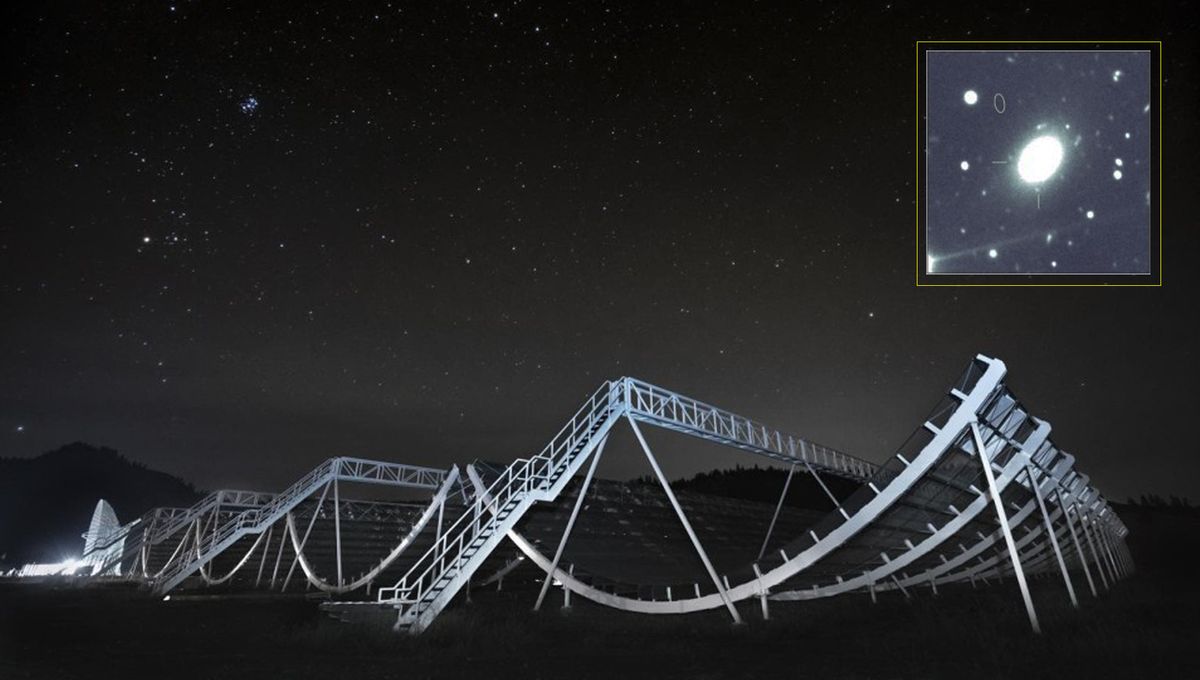
Fast radio bursts (FRBs) are brief emissions of radio waves, lasting a fraction of a second but with as much energy as the Sun’s over days or even longer. Several FRBs have been linked to a subclass of neutron stars known as magnetars that possess, as the name suggests, stupendous magnetic fields. A recently observed FRB, however, is challenging the universality of this origin.
ADVERTISEMENT GO AD FREE
Magnetars are a young galaxies game, where they form in certain supernovae. FRBs are also more often seen near the center of galaxies. The new FRB, called FRB 20240209A, breaks the mold in two ways: it’s the first one to come from a massive and old elliptical galaxy, and it is also far away from the galactic center, roughly 130,000 light-years from it.
“The prevailing theory is that FRBs come from magnetars formed through core-collapse supernovae,” said Tarraneh Eftekhari, who led one of the studies detailing the new FRB and coauthored the other, in a statement.
“That doesn’t appear to be the case here. While young, massive stars end their lives as core-collapse supernovae, we don’t see any evidence of young stars in this galaxy. Thanks to this new discovery, a picture is emerging that shows not all FRBs come from young stars. Maybe there is a subpopulation of FRBs that are associated with older systems.”
The first detection of the new FRB was performed by the Canadian Hydrogen Intensity Mapping Experiment (CHIME) on February 9, 2024. FRB 20240209A then was spotted repeating in July with 21 new pulses, some of which were also detected by other telescopes. This allowed astronomers to pinpoint its location to an elliptical galaxy 2 billion light-years from Earth, weighing something like 100 billion times the mass of our Sun.
“It seems to be the most massive FRB host galaxy to date,” Eftekhari said. “It’s among some of the most massive galaxies out there.”
While this FRB is the first from the outskirts of a quiet elliptical galaxy, a few years back an FRB was traced to the outskirts of a nearby spiral galaxy, M81. That came from a globular cluster and this new FRB might also come from such a tight collection of stars at the far reach of a galaxy.
ADVERTISEMENT GO AD FREE
“A few years ago, the M81 FRB was surprisingly discovered within a dense cluster of stars called a globular cluster,” explained Wen-fai Fong, a senior author on both studies. “That event single-handedly halted the conventional train of thought and made us explore other progenitor scenarios for FRBs.”
“This new FRB shows us that just when you think you understand an astrophysical phenomenon, the universe turns around and surprises us. This ‘dialogue’ with the universe is what makes our field of time-domain astronomy so incredibly thrilling.”
The team has submitted a proposal to JWST to study this elliptical galaxy and see if there is a globular cluster at the location of this FRB. If this turns out not to be the case, then there might be something truly unique about this event.
The studies are published in The Astrophysical Journal Letters, here and here.
Source Link: New Fast Radio Burst Location Hints At Completely Different Cosmic Beast